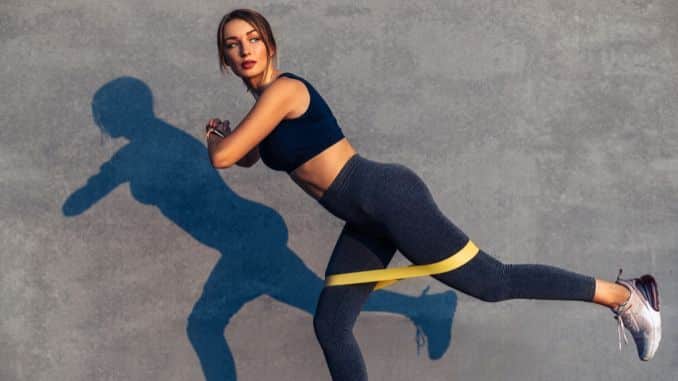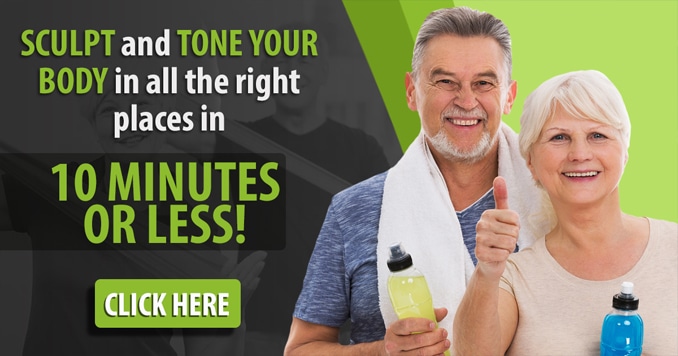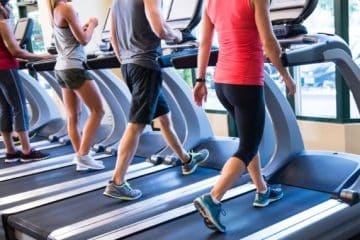¹
Looking to achieve specific fitness goals? Targeted exercises are the key to getting the results you want!
When discussing these kinds of exercises, we're diving into activities targeting certain body muscles. Think of it like doing those bicep curls at the gym or those lunges you do in a workout class.
They're all about honing in on specific muscles to make them stronger and more resilient.
Now, why do we bother with these targeted exercises?
Well, they're like the secret sauce for reaching our fitness goals or improving how we perform in sports or other activities. Plus, they can help us address any weak spots or imbalances we might have, which is pretty handy.
Understanding Targeted Exercises
So, what's the deal with understanding these exercises?
It's all about knowing which muscles we're working when we do them and how they fit into the bigger picture of our overall fitness or any rehab we might be doing.
It's like knowing why you're doing those squats or those planks beyond feeling the burn.
Here's the lowdown on what to keep in mind when diving into targeted exercises:
Here are some key aspects to consider:
1. Muscle Groups
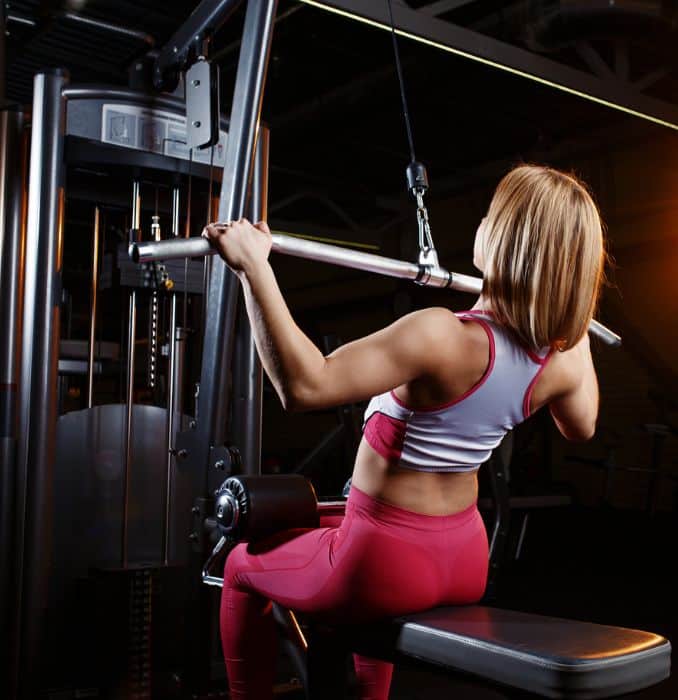
Identify the certain muscle groups involved in the exercise. For example, a bicep curl primarily targets the biceps brachii. At the same time, a squat engages multiple muscles in the lower body, including the quadriceps (thigh muscles), hamstrings, and glutes, thus involving several muscle groups.
2. Form And Technique
Proper form and technique [³] cannot be overstated when performing exercises. It's not just about the workout's effectiveness but also about your safety. Correct form ensures that the intended muscles are being targeted and significantly reduces the risk of injury.
3. Fitness Goals
Different exercises target different fitness goals. For instance, if you aim to build strength, you might focus on compound movements like deadlifts and bench presses. Targeted stretches might be more appropriate if your goal is to improve flexibility.
4. Repetition And Sets
Understanding the recommended number of repetitions (reps) and sets for a particular exercise is important (Physical Activity [⁷] Guidelines for Americans, as mentioned by the Centers for Disease Control and Prevention, 2022). This information helps you structure your workout to achieve the desired outcome, whether it's building endurance, strength, or hypertrophy (muscle growth).
General Guideline For Sets And Repetitions
- Strength Training:
- Beginners: 1-3 sets of 8-12 repetitions per exercise
- Intermediate: 3-4 sets of 8-12 repetitions per exercise
- Advanced: 3-5 sets of 6-12 repetitions per exercise
- Muscle Endurance:
- 2-3 sets of 12-20 repetitions per exercise
- Muscle Mass:
- 3-5 sets of 6-12 repetitions per exercise
- Muscle Power:
- 3-5 sets of 3-6 repetitions per exercise, using explosive movements
5. Progression
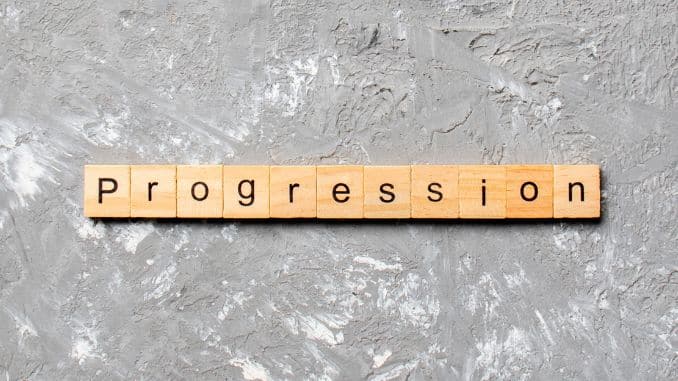
As you become more proficient in your workouts, you may need to increase the intensity or resistance to continue seeing progress. This can involve adding weight, increasing repetitions, or adjusting the difficulty of the exercise.
6. Balanced Training
While these exercises are important for focusing on specific areas, it's also essential to maintain a balanced training routine. This includes addressing opposing muscle groups to prevent muscle imbalances [⁵], which can lead to injury.
7. Incorporating Variety
Mixing up your exercises helps prevent boredom and ensures that different muscle groups are consistently challenged. This variety can also contribute to overall fitness by promoting flexibility, agility, and cardiovascular health.
8. Rest And Recovery

Muscles need time to recover and adapt to exercise stress. Adequate rest [1] between workouts and proper nutrition are essential to any effective fitness program.
Examples of targeted routines for specific muscle groups include:
- Biceps: Bicep curls, hammer curls
- Chest: Bench press, push-ups
- Legs: Squats, lunges, leg extensions
- Core: Planks, Russian twists
- Back: Lat pulldowns, rows
Before embarking on a new exercise routine, it is recommended that you seek advice from a fitness expert or medical practitioner. This is particularly crucial if you have any pre-existing health issues or conditions. By doing so, you can receive personalized guidance that considers your unique needs and goals.
Benefits Of Targeted Exercises
With their wide-ranging benefits, targeted routines cater to general fitness and specific health goals.
Let's delve into some of these key advantages:
-
Muscle Strength And Definition
Targeted routines focus on specific muscle groups, leading to increased strength [⁴] and muscle definition in those areas. This can improve overall functional capacity and make daily activities easier.
-
Improved Muscle Tone
Regularly engaging in targeted routines helps to tone and firm muscles, contributing to a more sculpted appearance.
-
Enhanced Flexibility
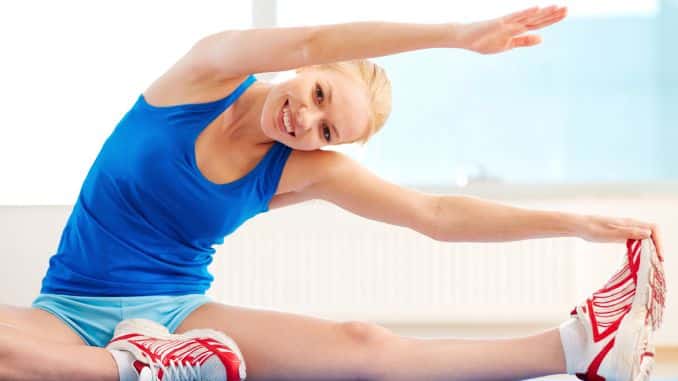
Specific routines aimed at stretching and enhancing range of motion can enhance flexibility.
-
Weight Management
Incorporating targeted routines into a well-rounded fitness routine supports weight management by burning calories and promoting a healthy metabolism.
-
Increased Bone Density
Weight-bearing targeted routines, such as resistance training, can aid in boosting bone density, thus decreasing the likelihood of osteoporosis and promoting overall bone health [⁹]. Additionally, these exercises can contribute to alleviating knee pain by enhancing the strength and stability of the knee joint, even when performing movements that involve keeping the knees straight.
-
Enhanced Functional Movement
Targeted routines often mimic real-life movements, improving functional fitness. This can simplify daily tasks and lower the likelihood of injury during routine activities.
-
Improved Posture

Strengthening specific muscle groups, especially in the core and back, can improve posture. This is important for spinal health and can alleviate discomfort associated with poor posture.
-
Injury Prevention
Strengthening targeted muscle groups can help prevent injuries by improving the stability and support around joints. This is particularly significant for athletes and people engaged in sports or physical pursuits.
-
Increased Metabolism
You can directly influence your basal metabolic rate (BMR) by engaging in specific muscle-building routines. This, in turn, can significantly aid in weight management and boost your overall energy expenditure, leading to a more active and healthier lifestyle [¹⁰].
-
Enhanced Sports Performance
Athletes often use targeted routines such as strength, speed, and agility to improve their performance [⁸] Tailoring workouts to the demands of a particular sport can lead to better athletic outcomes.
-
Better Mental Health

Exercise has been associated with enhanced mood and decreased levels of stress and anxiety [²]. The secretion of endorphins during exercise plays a role in fostering a positive mental outlook.
-
Customization For Specific Goals
Targeted routines allow individuals to tailor their workouts to specific fitness goals, whether building muscle mass, increasing endurance, or improving flexibility. This customization can lead to more efficient and effective workouts.
Incorporating a variety of targeted routines into a comprehensive fitness routine can help individuals achieve a well-rounded fitness level and address specific health and performance objectives. A balanced approach, including targeted and full-body exercises, is often the most effective for overall health and fitness.
Types Of Targeted Routines For Major Muscle Groups
Here are the types of targeted routines that can help you understand how each exercise targets specific muscle groups and contributes to overall strength, muscle development, and functional fitness:
1. Legs
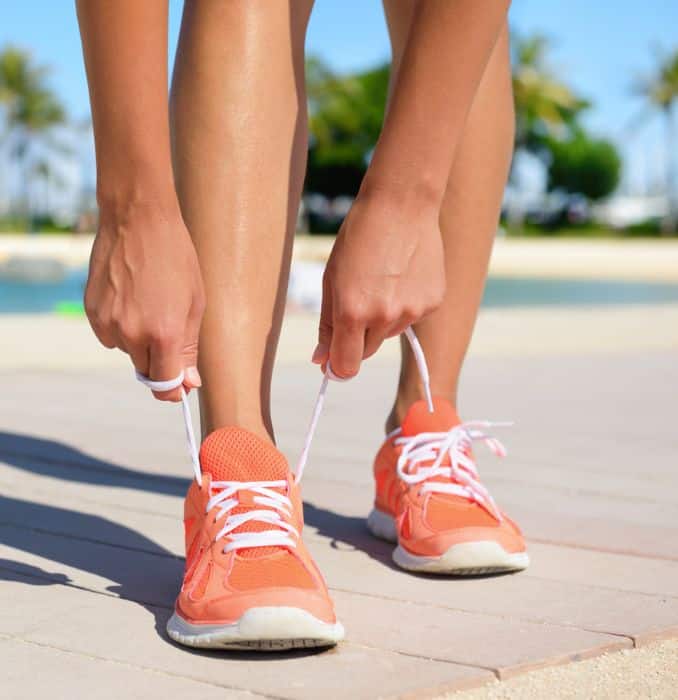
a. Squats: This compound exercise is a cornerstone for lower body strength. It engages the quadriceps, hamstrings, and glutes. As you lower your body into a squatting position and then stand back up, these muscles work together to provide stability and power, making squats an excellent functional movement.
b. Lunges: Lunges are unilateral exercises targeting the quadriceps, hamstrings, and glutes. By stepping forward or backward and lowering your body, lunges help improve balance, coordination, and muscle imbalances between the legs.
c. Deadlifts: A fundamental posterior chain exercise, deadlifts primarily work the hamstrings, glutes, and lower back. They emphasize hip extension and are effective for building strength and stability in the entire backside of the body.
2. Chest
a. Bench Press: This classic compound movement is a staple for chest development. It targets the pectoralis major muscles. As you lower and lift the barbell or dumbbells, the chest muscles are activated, promoting strength and size.
b. Chest Flyes: This isolation routine targets the chest muscles by mimicking a hugging motion. It involves controlled movements, usually with dumbbells, to promote muscle engagement and development.
3. Back
a. Pull-Ups/Chin-Ups: Pull-ups target the upper back, especially the latissimus dorsi, biceps, and other muscles. This bodyweight routine is excellent for developing upper body strength and improving grip.
b. Rows (Bent-Over, Cable, Dumbbell): Rows come in various forms and engage the upper back and lats. Whether bent over with a barbell or cables, these help develop a strong, defined back.
4. Shoulders
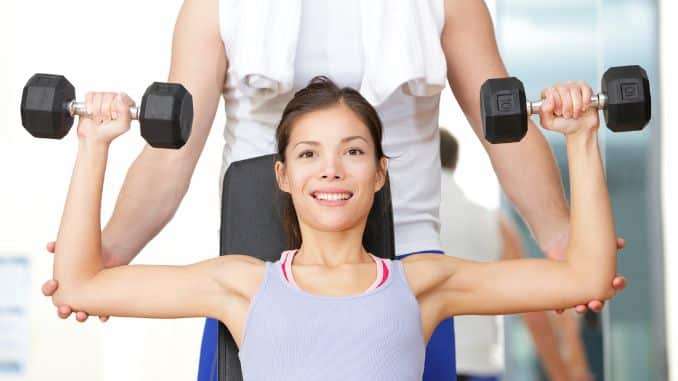
a. Shoulder Press: This compound movement targets the deltoid muscles. Whether performed with a barbell or dumbbell, shoulder presses help build strength and definition in the shoulders, contributing to an aesthetically balanced physique.
b. Lateral Raises: Isolating the side shoulder muscles, lateral raises improve shoulder width and definition. This exercise involves lifting the arms to the sides against resistance, working the lateral or medial deltoids.
c. Front Raises: Focusing on the front deltoids, front raises involve lifting the arms forward. This exercise complements shoulder presses by providing targeted stimulation to the anterior deltoid muscles.
5. Arms
a. Bicep Curls: Bicep curls isolate the biceps brachii. Whether performed with dumbbells, a barbell, or cables, this exercise enhances strength [⁶] and bulk in the anterior section of the upper arm.
b. Tricep Dips: Tricep dips target the triceps the muscles on the back of the arms. This exercise, performed on parallel bars or a sturdy surface, entails extending and flexing the elbow joints using one's body weight.
Hammer curls work both the biceps and forearms. This modification entails gripping the dumbbells neutrally (with palms facing each other) while lifting and lowering them, offering a distinct stimulus to the muscles.
6. Core
a. Planks: Planking activates all core muscles, encompassing the rectus abdominis, transverse abdominis, and obliques. This isometric exercise involves maintaining a straight body position, promoting core stability and strength.
b. Russian Twists: This fun and challenging exercise is like a dance for your obliques, as you twist your torso from side to side. It's a great way to enhance rotational stability and sculpt a well-defined waistline.
c. Bicycle Crunches: Bicycle crunches activate the rectus abdominis and obliques by integrating a twisting motion with leg movement. This dynamic exercise helps build strength and definition in the abdominal muscles.
7. Glutes
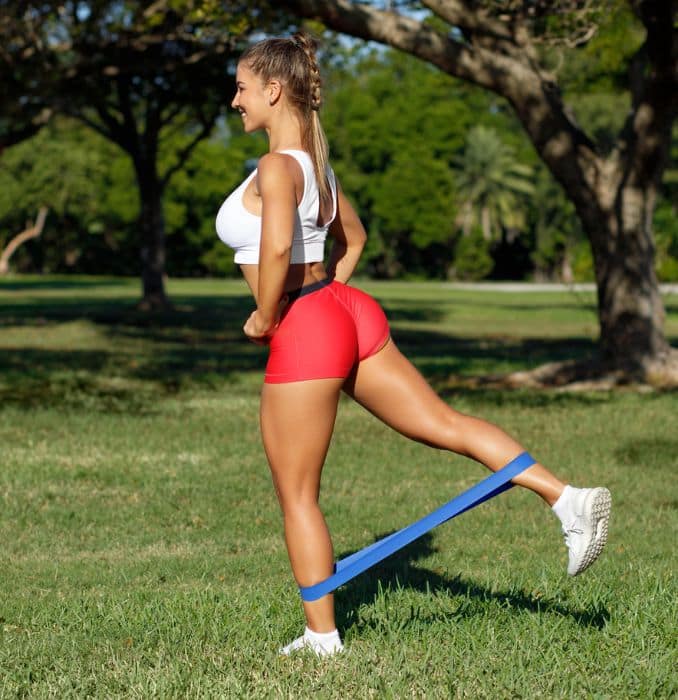
a. Glute Bridges: Glute bridges isolate and activate the glute muscles. This exercise involves lifting the hips towards the ceiling while maintaining a stable back, contributing to stronger, more toned glutes.
b. Hip Thrusts: Similar to glute bridges but with added resistance, hip thrusts effectively activate and develop the glute. This exercise involves thrusting the hips upward against resistance, often using a barbell.
c. Donkey Kicks: Donkey kicks engage the glutes by lifting the leg backward while resisting. This bodyweight or resistance band exercise effectively isolates and strengthens the gluteal muscles.
8. Calves
a. Calf Raises: Calf raises target the muscles of the calves. This simple yet effective exercise involves lifting the heels off the ground and working the gastrocnemius and soleus muscles of the lower leg.
b. Jump Squats: While primarily a lower body exercise, jump squats engage the calf muscles during the explosive jump. This plyometric movement adds an element of power and can contribute to calf development.
It's crucial to remember that incorporating various routines targeting the same muscle group is key to comprehensive development and preventing plateauing in your fitness journey. So, let's explore some specific routines to sculpt your body.
Warm-Up
Before starting the primary workout, it's essential to nicely prepare the muscles in your upper body to avoid injuries and enhance your performance.
1. Shoulder Rolls
Begin this targeted exercises in an upright standing position with your feet hip-width apart, maintaining good alignment with your head, shoulders, hips, and legs. Engage your core. Shift your shoulders forward, then roll them up and back until you feel resistance in your shoulder blades. Return to the starting position and repeat the movement. After several repetitions, repeat the movement in the opposite direction.
 |
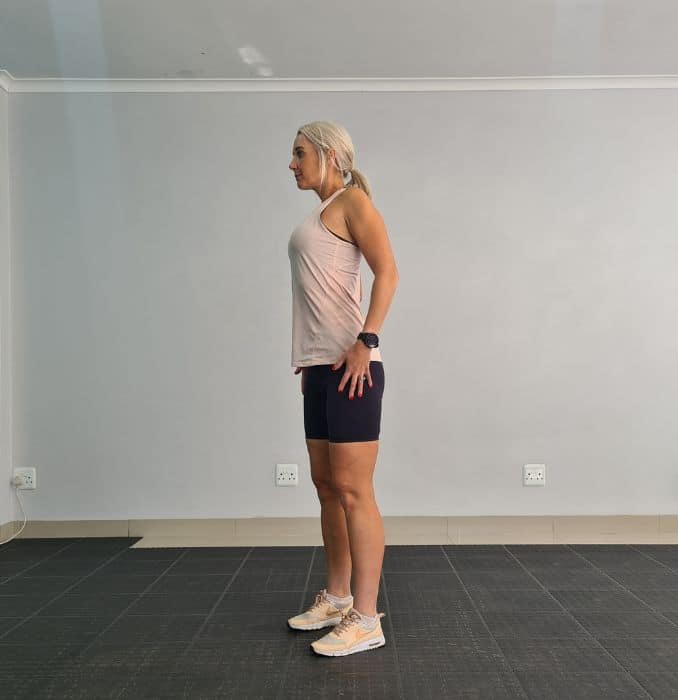 |
2. Standing Twist
Begin in an upright standing position with your feet shoulder-width apart, maintaining good alignment with your head, shoulders, and hips. Engage your core. Extend both arms in front of your body at chest height with your palms pressed together. Tighten your abdominal muscles. Twist your upper body as you open one arm out to the side, keeping your hips locked in the forward position. Return to the starting position and repeat the movement on the opposite side. Complete 8 repetitions on each side.
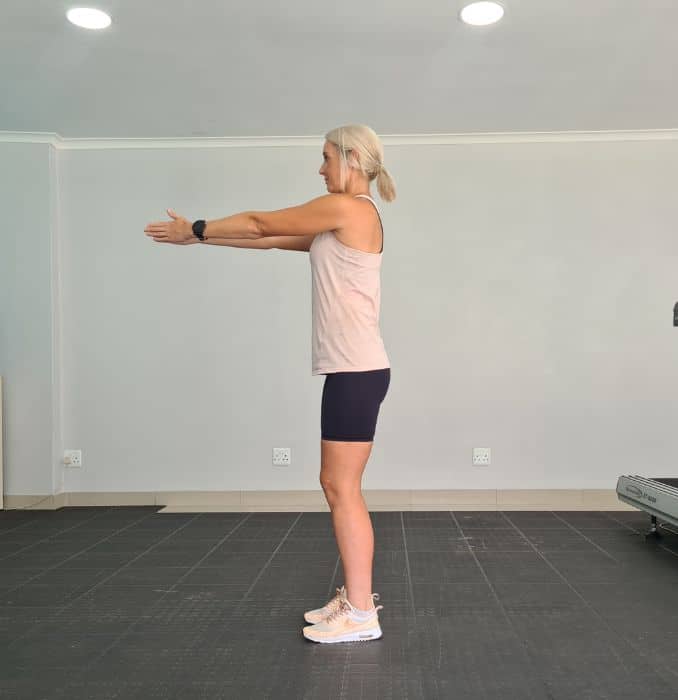 |
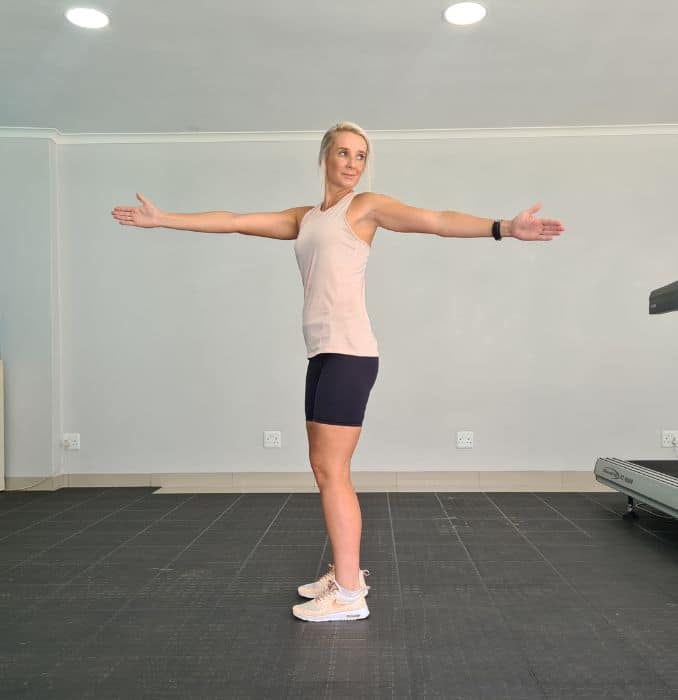 |
3. Squats
Begin this targeted exercises in an upright standing position with your feet slightly wider than shoulder-width apart, maintaining good alignment with your head, shoulders, and hips. Place your hands on your hips and tighten your abdominal muscles. Bend your knees and hinge through your hips to move into a squat position, keeping your knees behind your toes. Raise back up to an upright standing position, squeezing your glutes at the top position. Repeat the movement for 10 repetitions.
 |
 |
4. Lateral Leg Lifts
For this exercise, utilize a chair or wall for balance and support, if needed.
Begin this targeted exercises in an upright standing position with your legs hip-width apart, maintaining good alignment with your head, shoulders, hips, and legs. Hold onto the back of the chair with one hand for balance while you place your opposite hand on your hip. Engage your core and lift one leg out to the side, ideally to a 30 to 45-degree angle, keeping your toes pointing forward. Lower your leg back to the starting position and repeat the movement. Start off with 1 set of 10 to 15 repetitions on each side.
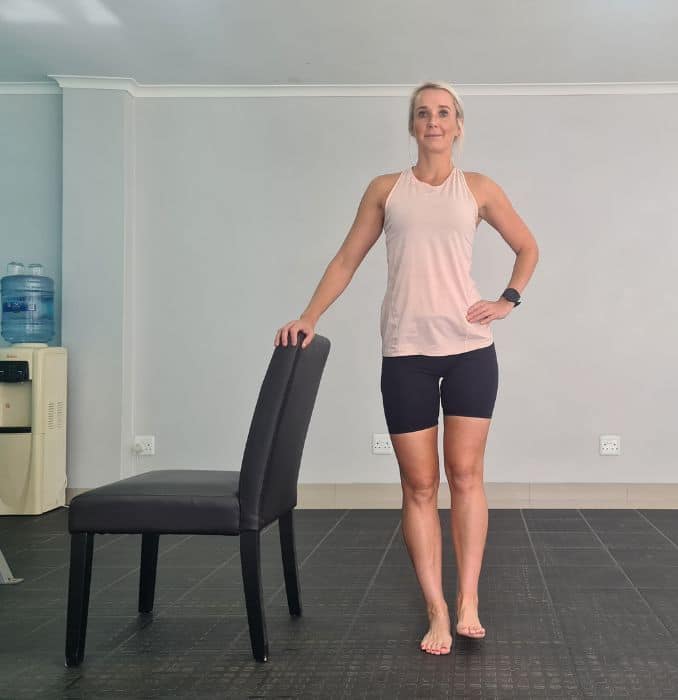 |
 |
Resistance Training Exercise Routine
Now that you're warmed up get backed up for the resistance training exercise to strengthen your body.
1. Banded Monster Walk
For this exercise, utilize a mini band for added resistance.
Begin in an upright standing position with your legs hip-width apart, maintaining good alignment with your head, shoulders, hips, and legs. Wrap the mini band around your legs, just below your knees, and place your hands on your hips. Engage your core and step one foot forward, following with your other foot. Walk back to return to the starting position and repeat the movement. Perform the movement for 3 sets.
 |
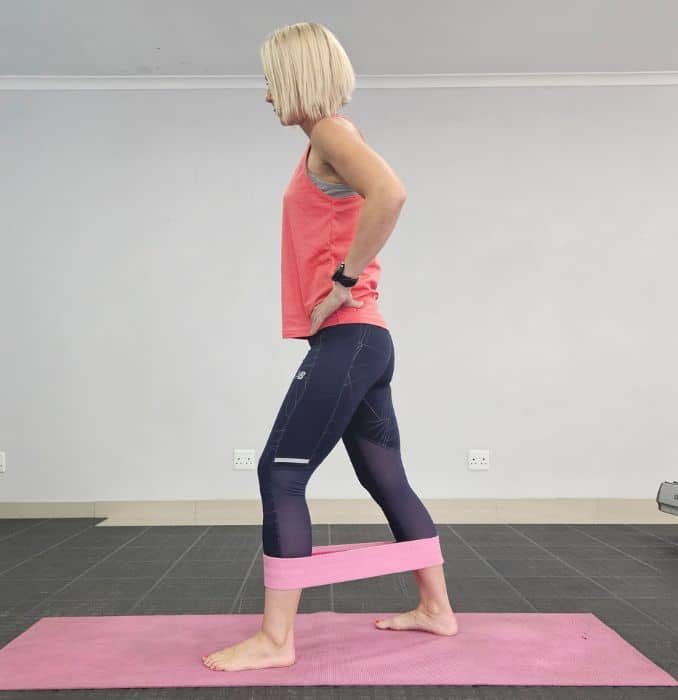 |
2. Banded Squats
For this exercise, utilize a mini band for added resistance.
Begin this targeted exercises in an upright standing position with your feet considerably wider than shoulder-width apart, maintaining good alignment in your upper body. Wrap the mini band around your legs, just above your knees, and hold your hands together at chest height. Contract your core. Bend your knees and hinge through your hips to move into a squat position, creating resistance on the band. Raise back up to return to the starting position and repeat the movement. Start off with 3 sets of 10 to 15 repetitions.
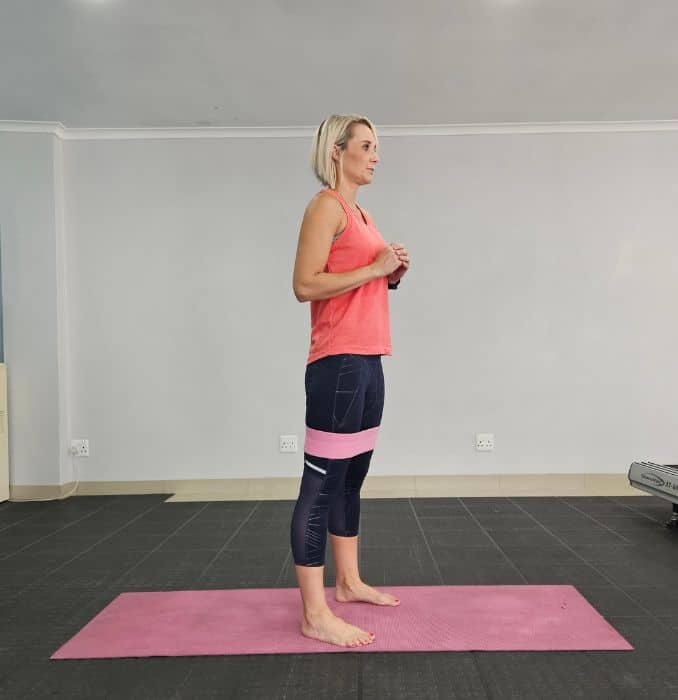 |
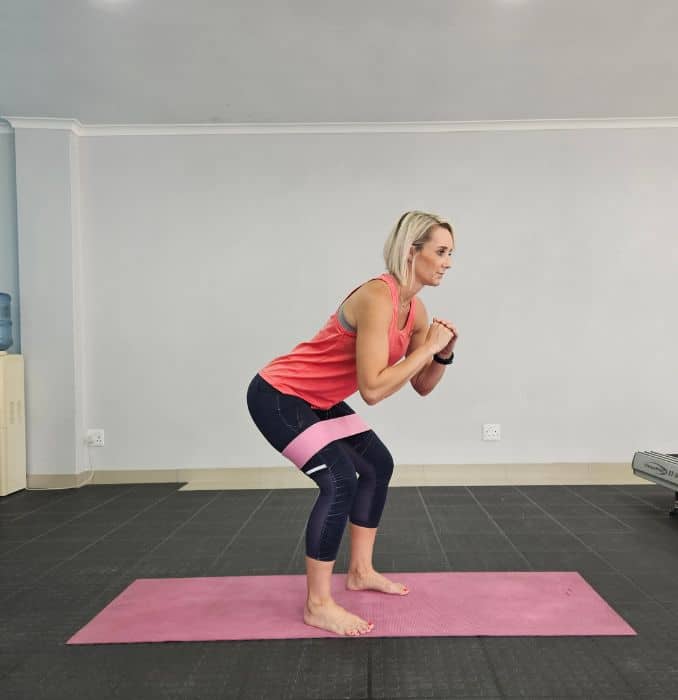 |
3. Side Steps (Side Shuffle)
For this exercise, utilize a mini band for added resistance.
Begin in an upright standing position with your feet shoulder-width apart, maintaining good alignment with your head, shoulders, hips, and legs. Wrap the mini band around your legs, just above your knees, and hold your hands together at chest height. Engage your core, bend your knees, and hinge from your hips to move into an athletic position. Take a big step to the side with one leg, following with your opposite leg. Repeat the movement on the opposite side. Perform the movement for 3 sets of 15 repetitions on each side.
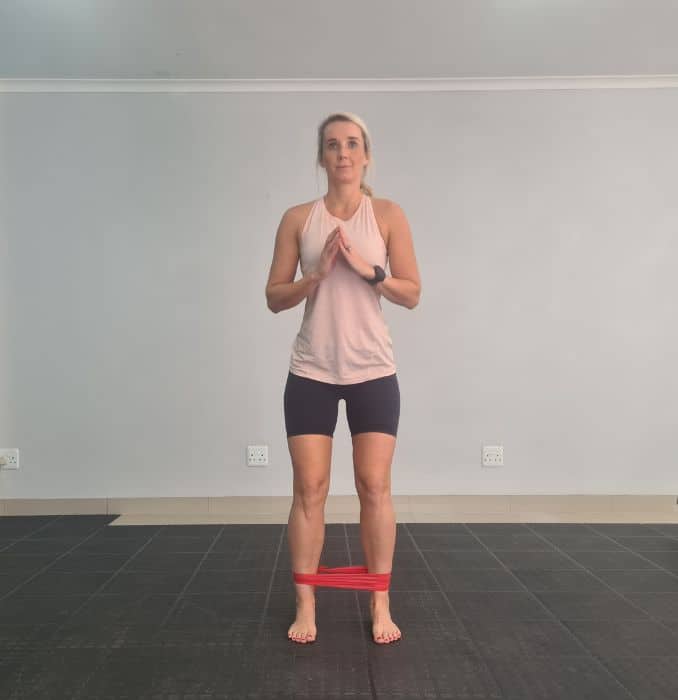 |
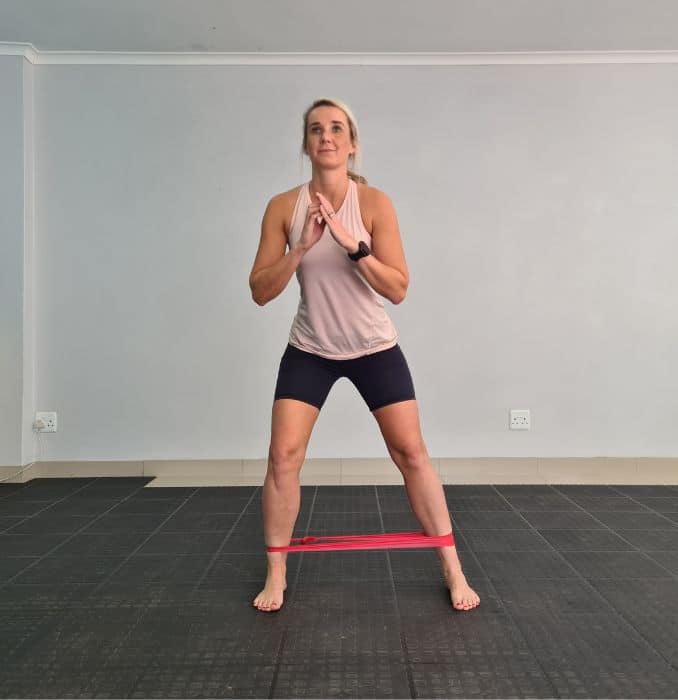 |
4. Leg Extension
For this exercise, utilize a chair or wall for balance and a mini band for added resistance.
Begin in an upright standing position with your feet hip-width apart, maintaining good alignment with your head, shoulders, hips, and legs. Wrap the mini band around your legs, just above your knees. If needed, hold onto the back of the chair for balance. Engage your core and slightly bend your legs. Take a big step back with your one leg, creating resistance on the band. Return to the starting position and repeat the movement on the opposite leg. Start off with 3 sets of 15 repetitions on each side.
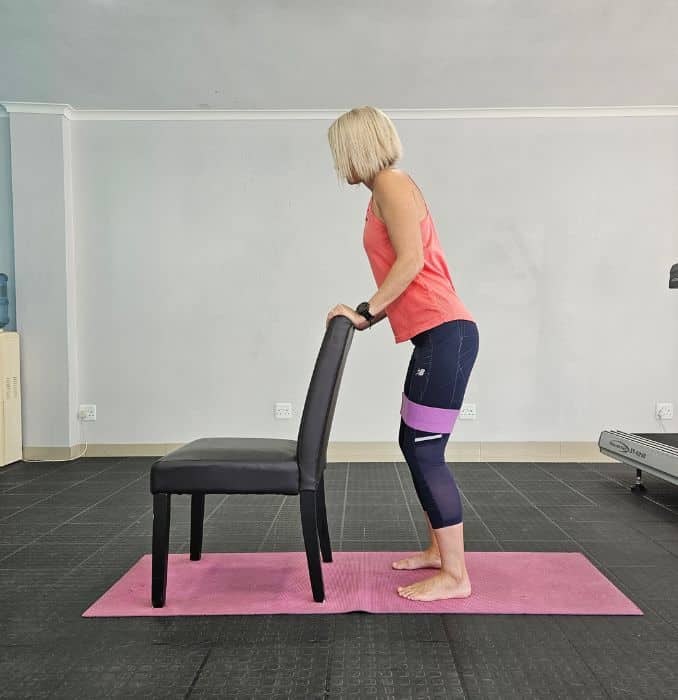 |
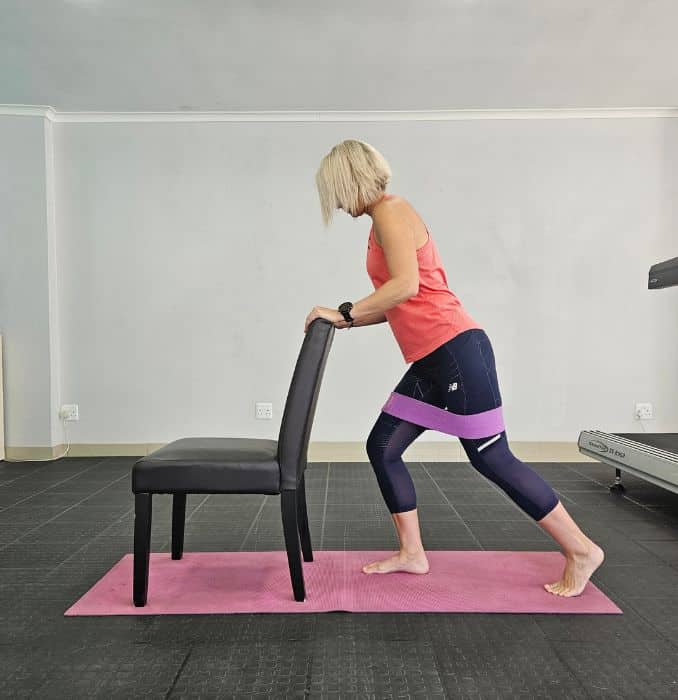 |
5. Leg Abduction
For this exercise, utilize a mini band for added resistance.
Begin this targeted exercises in an upright sitting position on a chair with your knees bent and feet flat on the floor, maintaining a good alignment in your upper body. Wrap the mini band around your legs, just above your knees. Engage your core and bring your knees out to the sides, creating resistance on the band. Return to the starting position and repeat the movement. Complete for 3 sets of 20 repetitions.
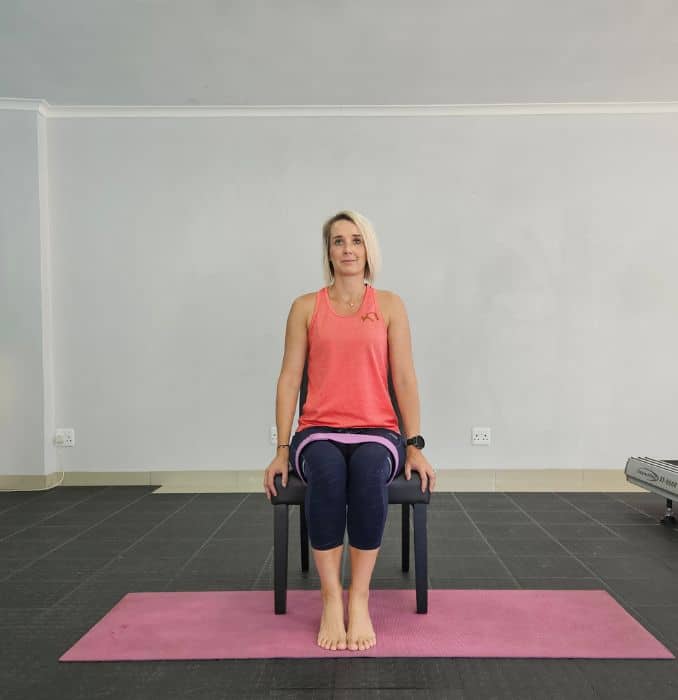 |
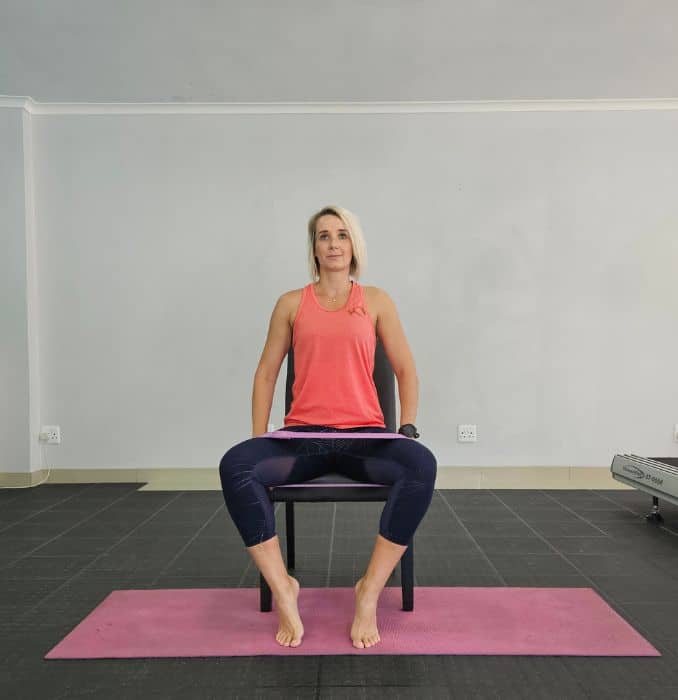 |
6. Figure 4
Begin in an upright sitting position on the front of a chair with your knees bent and feet flat on the floor, maintaining good alignment with your head, shoulders, and hips. Cross one ankle over your opposite knee. Engage your core and hinge through your hips to bend your upper body forward. Hold this position for a couple of seconds. Return to the starting position and repeat the movement on the opposite side.

7. Forward Fold
Begin this targeted exercises in an upright standing position with your feet hip-width apart, maintaining good alignment with your head, shoulders, hips, and legs. Tighten your core and hinge through your hips to bend your upper body forward. Slowly lower your head and arms to the floor while keeping your knees soft. Hold this position for several deep belly breaths, in through your nose and out through your mouth. Relax and raise back up to the starting position.

Integrating these targeted exercises into your fitness routine can strategically and effectively address specific fitness goals and enhance overall physical well-being.
Conclusion
Adding targeted exercises to your workout routine is like customizing your fitness journey. It's all about fine-tuning your exercises to hit specific muscle groups and meet your personal goals. These exercises help you build strength, improve flexibility, and carve out those muscles you're aiming for. The beauty lies in their adaptability—fitting into your routine as your goals evolve. They're the secret sauce for a well-rounded workout plan that keeps you feeling empowered and on track toward your fitness ambitions.
Check out our Sculpt & Strengthen Mini Band Workout just for you!

